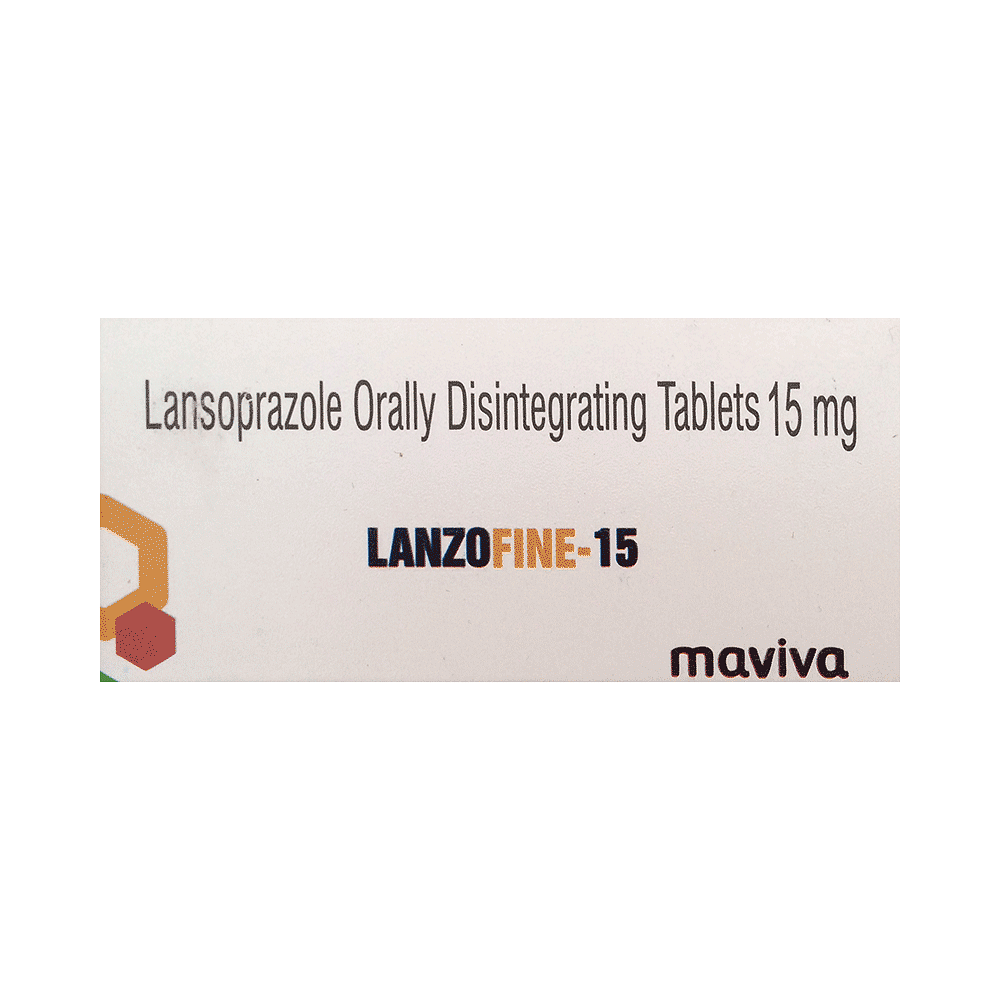
Lansoles 15mg Tablet DT
Manufacturer
Uvb Healthcare Pvt Ltd
Salt Composition
Lansoprazole (15mg)
Key Information
Short Description
Lansoles 15mg Tablet DT is a medicine that reduces the amount of acid produced in your stomach. It is used for treating acid-related diseases of the stomach and intestine such as acid reflux, peptic ulcer disease, and some other stomach conditions associated with excessive acid production.
Dosage Form
Tablet DT
Introduction
Lansoles 15mg Tablet DT is also used to prevent stomach ulcers and acidity that may be seen with the prolonged use of painkillers. It belongs to a class of medicines known as proton pump inhibitors (PPIs). This medicine should be taken one hour before a meal, preferably in the morning. The dose will depend on your underlying condition and how you respond to the medicine. You should keep on taking it as prescribed even if your symptoms disappear quickly. You can increase the efficiency of the treatment by eating smaller meals more often and avoiding caffeinated drinks (like tea and coffee) and spicy or fatty foods.
Directions for Use
Take this medicine in the dose and duration as advised by your doctor. Dissolve it in a glass of water before taking it. Lansoles 15mg Tablet DT is to be taken empty stomach.
Safety Information
Side Effects
nausea headache flatulence diarrhea
Alcohol Warning
Caution is advised when consuming alcohol with Lansoles 15mg Tablet DT. Please consult your doctor.
Breastfeeding Warning
Lansoles 15mg Tablet DT is probably safe to use during breastfeeding. Limited human data suggests that the drug does not represent any significant risk to the baby.
Pregnancy Warning
Lansoles 15mg Tablet DT is generally considered safe to use during pregnancy. Animal studies have shown low or no adverse effects to the developing baby; however, there are limited human studies.
Interacting Medicines
Atazanavir Cilostazol Indinavir Nelfinavir
How it works
Lansoles 15mg Tablet DT is a proton pump inhibitor (PPI). It works by reducing the amount of acid in the stomach which helps in relief of acid related indigestion and heartburn.
Quick Tips
Avoid excessive intake of carbonated beverages/soft drinks Avoid citrus juices Avoid fried food Avoid caffeinated beverages like tea and coffee Avoid alcohol and smoking Avoid eating late at night or before bedtime Inform your doctor if you get watery diarrhea, fever or stomach pain that does not go away Inform your doctor if you do not feel better after taking it for 14 days as you may be suffering from some other problem that needs attention Long-term use of Lansoles 15mg Tablet DT can cause weak bones and a deficiency of minerals such as magnesium. Take adequate dietary intake of calcium and magnesium or their supplements as prescribed by your doctor. Consult your doctor right away if you develop decreased urination, edema (swelling due to fluid retention), lower back pain, nausea, fatigue, and rash or fever. These could be signs of a kidney problem.
Related Medicines

Junior Lanzol 15mg Tablet Strawberry

Lanzofine 15 Orally Disintegrating Tablet

Lanzopep Kid 15mg Tablet DT

Lansoles 15 DT Tablet

Capcid 15mg Tablet DT

Lansobil 15mg Tablet DT

Lansogen 15mg Tablet DT

Inolan Kid 15mg Tablet DT

Lansocare Kid 15mg Tablet DT

Lanzopase 15mg Tablet DT
Frequently asked questions
What is Lansoles 15mg Tablet DT? What is it used for?
Lansoles 15mg Tablet DT is a proton pump inhibitor medication that reduces stomach acid production. It is primarily used to treat peptic ulcer disease (gastric and duodenal ulcers), reflux esophagitis, gastroesophageal reflux disease (GERD), and Zollinger-Ellison syndrome (ZES). By lowering the amount of acid produced in the stomach.
How is Lansoles 15mg Tablet DT administered through a nasogastric tube?
The medication should be given via a nasogastric tube according to your doctor's or nurse's guidance. This typically involves opening the capsule, mixing the contents with apple juice in a syringe, and attaching it to the tube before delivering the dose directly into the stomach. Once administered, flush the NG tube with additional apple juice to clear the tube.
When should Lansoles 15mg Tablet DT be taken – empty stomach or with food?
For most patients, taking Lansoles 15mg Tablet DT once a day in the morning on an empty stomach is recommended. If multiple doses are required daily, separate them by at least 12 hours and take them with water about an hour before meals.
Which foods should be avoided while taking Lansoles 15mg Tablet DT?
To minimize discomfort and worsening symptoms, it is advised to avoid foods that trigger acidity or heartburn. This includes fried or spicy dishes, high-fat ingredients like butter and oil, citrus-based beverages such as lemon water or orange juice, caffeinated drinks (e.g., cola or tea), and alcoholic beverages.
Is Lansoles 15mg Tablet DT used in children?
Yes, Lansoles 15mg Tablet DT is indicated for the management of gastroesophageal reflux disease (GERD) and erosive gastritis in pediatric patients. Its safety and effectiveness have been established in children aged 1 to 17 years.


